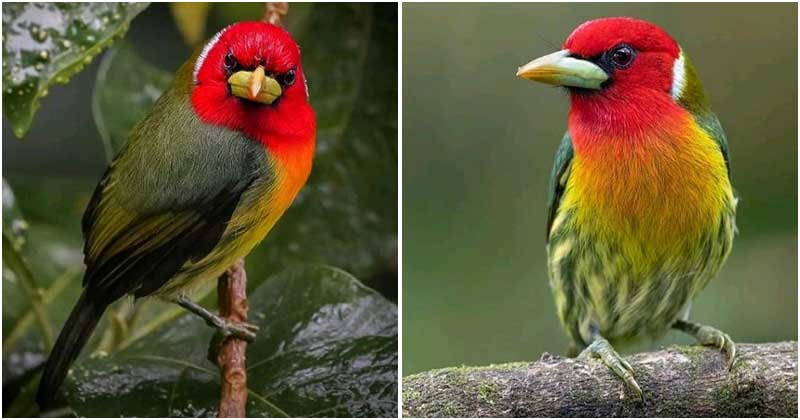The plumage is without dispute the first thing that makes birds easy to spot from amongst the others. Of course, some birds have distinctive features like a mohawk or eyebrow-like stripes. But the furry suits always help them conspicuous in their colony.
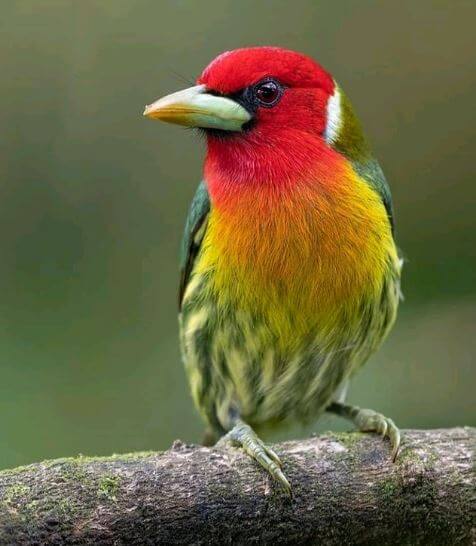 Image Credits: Instagram/_samirjoban.birds
Image Credits: Instagram/_samirjoban.birds
Today’s story is about a gorgeous bird species in the Capitonidae family, the red-headed barbet. As its name suggests, this barbet has a vivid red head and neck, coming along with a yellow-orange chest, white belly, and olive-green wings and tail. Its beak is also yellow.
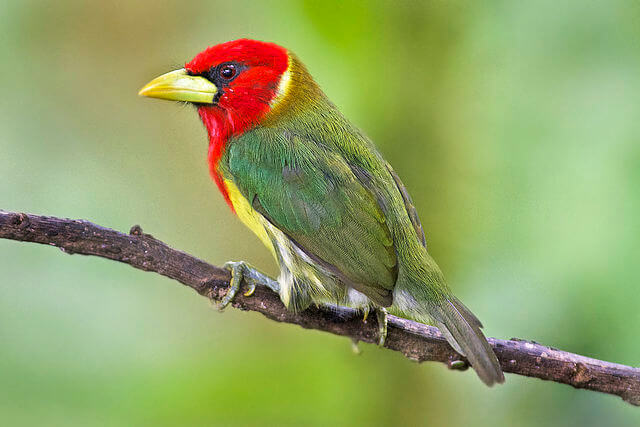 Image Credits: Dave Wendelken / CC BY 2.0
Image Credits: Dave Wendelken / CC BY 2.0
Just look! there is a white stripe on its upper neck, creating a striking contrast with the green back.
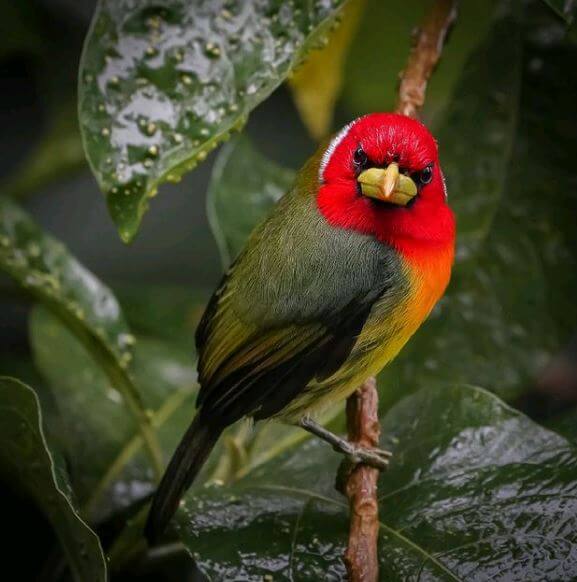 Image Credits: Instagram/bukuephotography
Image Credits: Instagram/bukuephotography
You can watch the video of this captivating bird below!
Like many other species, the female of this barbet is duller than the male. Her crown is dull orange and her nape is different shades of green. Not just that, the female has a grey-yellow throat and green back.
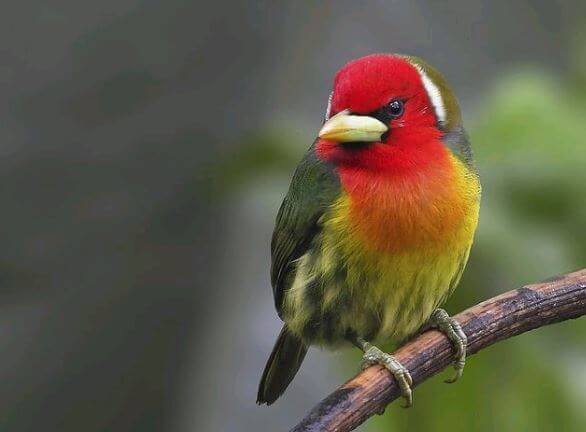 Image Credits: Instagram/fascinatingbirds
Image Credits: Instagram/fascinatingbirds
Red-headed barbet weighs from 1.1 to 1.4 oz. They have a large range that ensures their stable population.
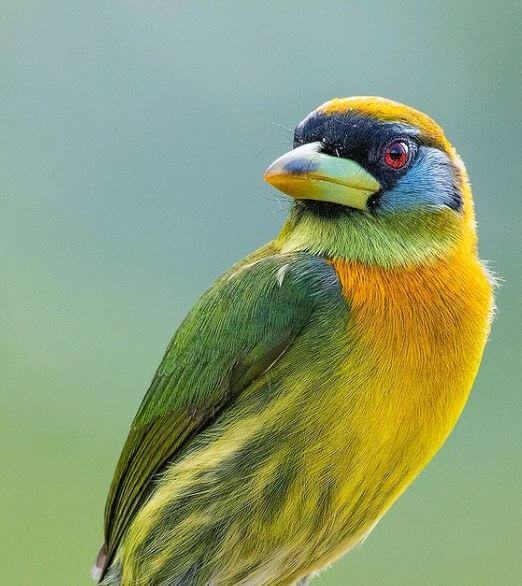 Image Credits: Instagram/juanpucci
Image Credits: Instagram/juanpucci
These birds in Costa Rica and Panama, on both slopes of the western Andes of Colombia, on the west slope of the Andes of Ecuador, and on the eastern slope of the Andes of Colombia, Ecuador, and northern Peru.
The favorite habitats of these barbets are mountain evergreen forests, forest borders, and adjacent secondary growth. They prefer living at 400-2,400 meters above the ground.
 Image Credits: Instagram/avesecuador
Image Credits: Instagram/avesecuador
The breeding season of this bird is from March to June. After finding mates, the females start to build their nests in a cavity in a tree or a fence post. They then lay 2-5 eggs inside and incubate them for around 15 days. Noticeably, the males support their mates at the daytime. They continue to feed the hatching with the females for the next 31-42 days. The chicks are then strong enough to leave nests to have their own life.
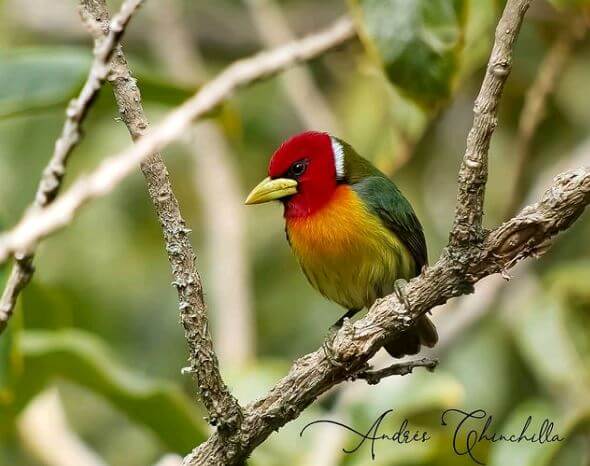 Image Credits: Instagram/birdwatching__tours_costarica
Image Credits: Instagram/birdwatching__tours_costarica
Regarding diets, this species feeds mainly on insects and arthropods. Beetles, caterpillars, earwigs, flies, and scorpions are all their sources of food. However, these birds sometimes eat fruits and berries if they are available in their foraging areas.
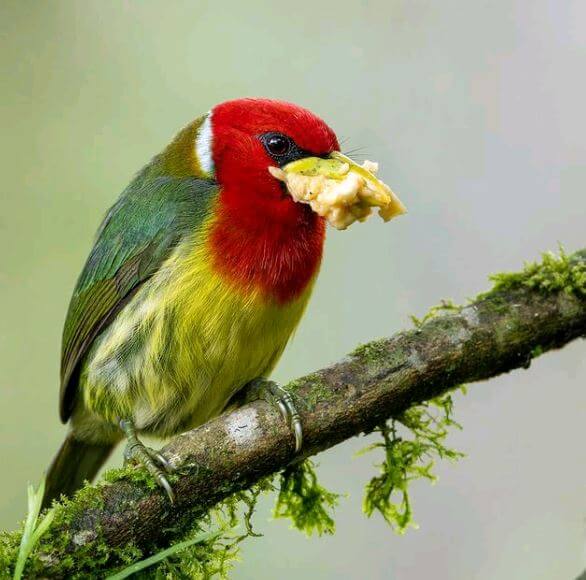 Image Credits: Instagram/stefanoianiromedia
Image Credits: Instagram/stefanoianiromedia
H/T: One Big Birdcage

